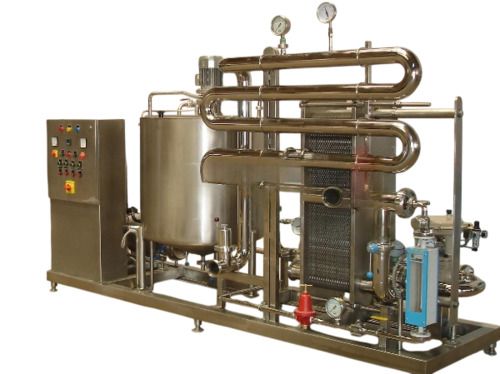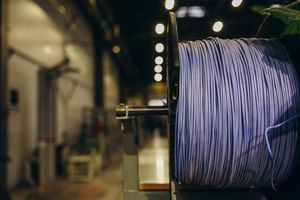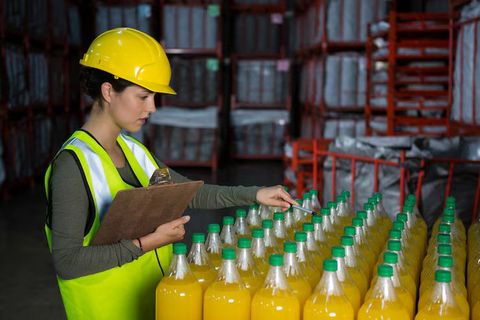Discover How Honey Processing Machines Work: Useful Information and Practical Tips
Honey processing machines play a vital role in the modern beekeeping industry. They simplify the extraction, filtration, and packaging of honey, ensuring purity and consistency. Understanding how these machines work helps beekeepers improve quality, reduce waste, and meet food safety standards. This article provides a clear overview of honey processing machines, why they matter, recent updates in the industry, relevant regulations, and helpful resources to explore further.
Honey processing machines are specialized equipment used to extract, purify, and package honey from raw combs. The process typically includes uncapping, extraction, filtration, and moisture reduction. These machines help ensure honey retains its natural nutrients while removing impurities such as wax or debris.
They come in various sizes and capacities, from small-scale units used by local beekeepers to industrial systems designed for commercial production. The goal is to make the honey ready for consumption and meet local and international quality standards.
Why Honey Processing Matters Today
The importance of honey processing has grown significantly due to rising demand for natural sweeteners, health-focused diets, and sustainable food products. Honey remains one of the few agricultural commodities that combines nutritional, medicinal, and economic value.
Here are some key reasons why honey processing is so relevant:
-
Food Safety and Quality: Processing ensures honey meets hygiene and purity standards.
-
Market Readiness: Properly processed honey has longer shelf life and better presentation.
-
Economic Stability for Beekeepers: Efficient processing helps small and medium-scale beekeepers increase productivity.
-
Export and Compliance: Countries require processed honey to meet international trade standards.
Global Impact
According to the Food and Agriculture Organization (FAO), global honey production reached over 1.8 million metric tons in 2023, with top producers including China, India, Turkey, and Argentina. As the demand grows, modern processing equipment helps meet large-scale production needs while maintaining quality.
Recent Trends and Updates in Honey Processing
The honey processing industry has seen several changes over the past year, especially regarding sustainability and automation.
-
Automation and Smart Controls (2024): Many manufacturers introduced automated temperature and humidity control systems to ensure uniform processing and energy efficiency.
-
Focus on Traceability: With increasing consumer interest in the origin of food, QR-coded packaging and blockchain-based tracking are gaining attention.
-
Sustainability Practices (2023–2024): Eco-friendly extraction methods, solar-powered processing units, and reduced water consumption technologies are being adopted.
-
Global Honey Market Growth: Reports from 2024 estimate that the global honey market will surpass USD 11 billion by 2027, driven by natural food trends and improved processing technologies.
These developments demonstrate that honey processing machines are not just about efficiency—they are evolving to align with environmental goals and modern quality demands.
Government Policies and Regulations
Honey production and processing are regulated by national food safety authorities and international trade bodies. Regulations ensure that honey remains pure, safe, and accurately labeled for consumers.
India
In India, the Food Safety and Standards Authority of India (FSSAI) sets standards for honey purity and labeling. The National Bee Board (NBB) also supports training and modernization programs for beekeepers under the National Beekeeping and Honey Mission (NBHM), launched in 2020. This initiative encourages sustainable honey production and processing across India.
United States
In the U.S., honey labeling and quality are monitored by the United States Department of Agriculture (USDA) and the Food and Drug Administration (FDA). These organizations ensure that honey is free from adulteration and that product claims are accurate.
European Union
The EU Honey Directive (2001/110/EC) regulates honey purity, moisture content, and labeling. In 2024, discussions continued in the European Parliament regarding stricter traceability standards to combat honey adulteration in imports.
These policies highlight how governments worldwide are ensuring transparency, sustainability, and consumer safety in honey production.
Tools, Resources, and Helpful Platforms
For beekeepers, researchers, and enthusiasts, several tools and resources can simplify honey processing and quality management.
Digital Tools and Apps
-
BeeConnected: A mapping app for tracking hive locations and nearby pesticide use.
-
Apiary Book: A digital record-keeping app for managing colonies and production data.
-
Beekeeping Management Software: Tools like HiveTracks help track honey yields and equipment maintenance.
Online Resources and Websites
| Resource | Purpose | Website |
|---|---|---|
| National Bee Board (India) | Government support and schemes | nbb.gov.in |
| FAO Beekeeping Guide | Global best practices | fao.org |
| USDA Honey Quality Standards | U.S. regulation reference | usda.gov |
| European Commission – Honey Directive | EU laws and updates | ec.europa.eu |
Helpful Equipment and Accessories
While no specific brand recommendations are included here, commonly used components in processing include:
-
Honey extractors (manual or electric)
-
Uncapping trays and knives
-
Honey filters and strainers
-
Moisture meters
-
Settling tanks and bottling units
Using these tools in combination ensures honey maintains its nutritional value and meets market-ready standards.
Common Questions About Honey Processing Machines
1. What are the main stages of honey processing?
The main stages include extraction (removing honey from combs), filtration (removing wax and impurities), and moisture reduction (to prevent fermentation). The final step is bottling and labeling for distribution.
2. Are honey processing machines suitable for small-scale beekeepers?
Yes. Compact models are designed for small producers, offering manual or semi-automatic options that are easy to operate and maintain.
3. How does processing affect the nutritional value of honey?
When processed correctly at controlled temperatures, honey retains most of its enzymes, antioxidants, and natural sugars. Overheating or prolonged exposure can degrade these nutrients, so temperature control is key.
4. What are common challenges in honey processing?
Maintaining consistent moisture levels, avoiding contamination, and ensuring hygienic conditions are the most common challenges. Automation helps reduce these issues.
5. How are governments supporting modern honey processing?
Many governments offer subsidies, technical training, and equipment modernization programs. For example, India’s NBHM provides grants for beekeeping equipment and awareness programs.
Overview of Honey Processing Methods
The honey processing industry uses several approaches depending on production scale and desired purity level.
| Method | Description | Best For |
|---|---|---|
| Manual Extraction | Hand-operated extractor and filters | Hobbyists, small apiaries |
| Semi-Automated Processing | Motorized extractors and filters | Medium-scale beekeepers |
| Fully Automated Lines | Integrated filtration, moisture control, and packaging | Industrial production |
This table illustrates how technology scales with production needs, helping users choose appropriate systems.
Discovering the Future of Honey Processing
The future of honey processing focuses on sustainable methods, data-driven quality control, and traceability. As global awareness of food safety and ecological balance grows, the honey industry is expected to adopt even smarter technologies. Artificial intelligence, IoT sensors, and eco-efficient designs are predicted to play key roles in the next generation of processing machines.
Beekeeping communities are also working with policymakers to strengthen fair-trade honey certifications and prevent adulteration. These developments will make honey production more transparent and globally competitive.
Conclusion
Honey processing machines are essential tools that bridge traditional beekeeping and modern food technology. They ensure quality, safety, and scalability in honey production, benefitting both local producers and global consumers. With ongoing innovation, supportive regulations, and accessible tools, the future of honey processing looks sustainable, efficient, and full of learning opportunities.
Understanding how these machines work provides valuable insight into a growing industry that connects nature, technology, and human effort in a single golden thread.






